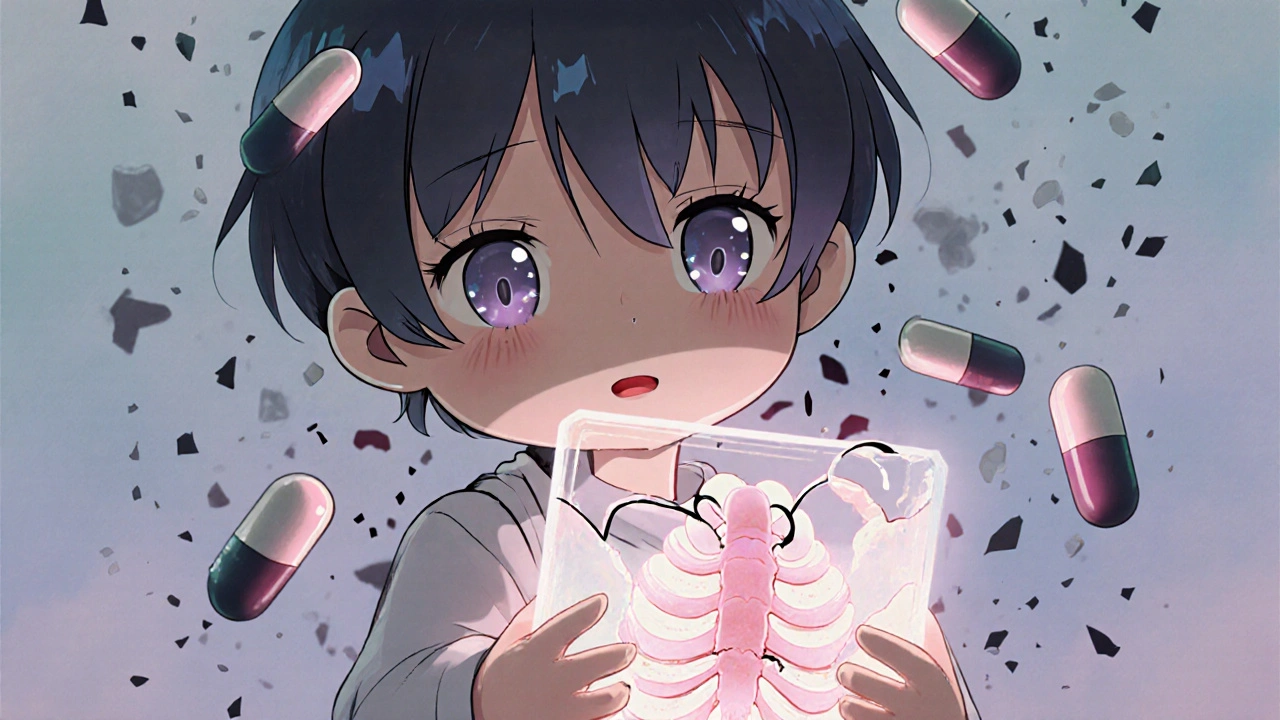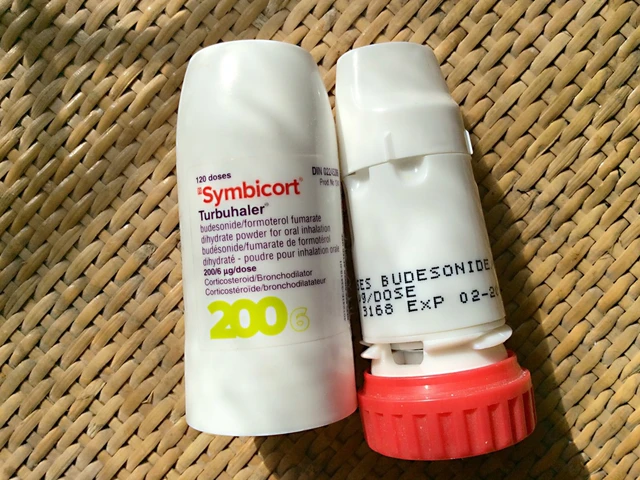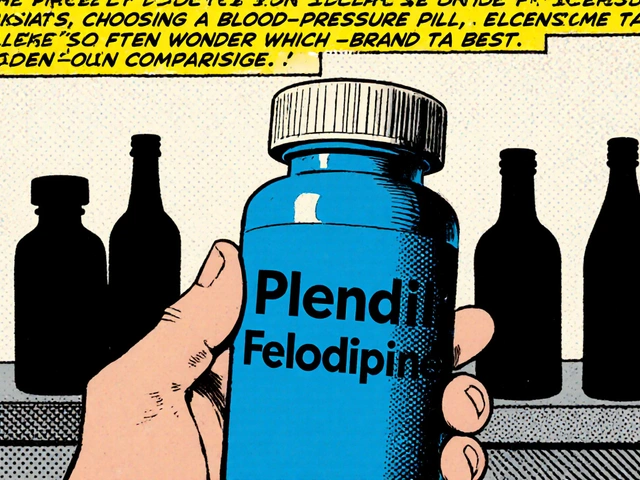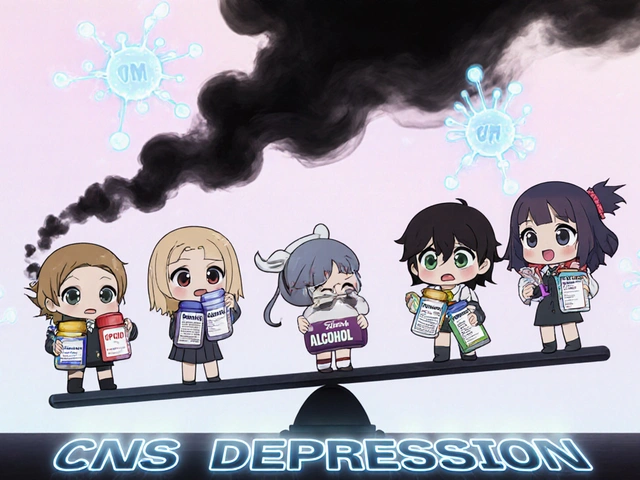Long-term steroid use doesn’t just affect your muscles or mood-it quietly eats away at your bones. If you’ve been on corticosteroids like prednisone for months or years, your risk of breaking a bone has likely gone up, even if you feel fine. This isn’t a rare side effect. It’s one of the most common and dangerous consequences of steroid therapy, especially for people with autoimmune diseases, asthma, or chronic inflammation. Many patients don’t realize their bones are weakening until they fall and crack a hip or spine. By then, the damage is often permanent.
How Steroids Attack Your Bones
Steroids like prednisone don’t just suppress your immune system-they disrupt the natural cycle of bone renewal. Your bones are alive. Every day, old bone breaks down and new bone forms. This process is called remodeling, and it’s managed by two types of cells: osteoclasts that break down bone, and osteoblasts that build it. Steroids throw this balance off. They ramp up osteoclast activity while shutting down osteoblasts. The result? Your bones lose mass faster than they can rebuild.
On top of that, steroids reduce calcium absorption in your gut. That means even if you’re eating dairy or taking calcium supplements, your body can’t use it well. At the same time, steroids make your kidneys flush out more calcium through urine. Your body’s calcium levels drop, and your bones start leaching calcium to keep your blood stable. It’s like robbing your retirement account to pay today’s bills.
And then there’s vitamin D. Steroids interfere with how your body activates vitamin D, which is essential for calcium absorption. Without enough active vitamin D, your bones starve-even if you’re getting sunlight or taking supplements. Studies show that after just three months of daily prednisone at 7.5 mg or higher, bone density can drop by 5-10%. That’s faster than most postmenopausal women lose bone.
Who’s Most at Risk?
Not everyone on steroids develops osteoporosis, but some people are far more vulnerable. Age matters. People over 65 are at higher risk because their bones are already losing density naturally. Women, especially after menopause, are more sensitive to steroid-induced bone loss due to lower estrogen levels. But men aren’t safe-long-term steroid use lowers testosterone, which also protects bone.
Body weight plays a role too. People with low BMI (under 20) have less cushioning around bones and fewer fat cells that produce bone-protecting hormones. If you smoke, drink alcohol regularly, or don’t get enough physical activity, your risk climbs even higher. And if you’ve already had a fracture before starting steroids, you’re in the danger zone.
One study from the University of Washington tracked 1,200 patients on daily prednisone for over a year. Those taking 5 mg or more daily had a 30-50% higher risk of spine fractures compared to those not on steroids. Even low doses, like 2.5 mg per day, increased fracture risk over time. There’s no safe threshold-only degrees of risk.
The Silent Progression of Bone Loss
Here’s the problem: bone loss from steroids doesn’t hurt. You won’t feel your bones thinning. There’s no swelling, no ache, no warning sign. That’s why most people don’t know they’re at risk until they break something. A simple fall from standing height, bending over to tie a shoe, or even coughing too hard can cause a vertebral compression fracture. These fractures often go undiagnosed because the pain fades quickly, and doctors assume it’s just back strain.
But the damage adds up. One spinal fracture increases your risk of another by 5 times. Two fractures raise your risk of a hip fracture by 3 times. And once you break a hip, your chance of dying within a year jumps to 20-30%. That’s not just a statistic-it’s a life-altering outcome.
Doctors often miss this. A patient comes in for a flare-up of rheumatoid arthritis, gets a 3-month steroid course, and leaves without a word about bones. No bone density scan. No calcium advice. No warning. That’s outdated thinking. Steroid-induced bone loss is preventable-if you know to look for it.

What You Can Do to Protect Your Bones
The good news? You don’t have to accept this as inevitable. There are proven steps to stop or slow bone loss while still using steroids when necessary.
- Get a bone density scan (DXA) within the first 3 months of starting long-term steroids. This is the only way to know your current bone strength. The scan is quick, painless, and covered by most insurance.
- Take calcium and vitamin D daily. Aim for 1,200 mg of calcium and 800-1,000 IU of vitamin D. Don’t rely on diet alone. Supplements are needed because steroids block absorption. Take them with food for better uptake.
- Ask about bone-protecting drugs. Bisphosphonates like alendronate (Fosamax) or risedronate (Actonel) are first-line treatments. They slow bone breakdown and reduce fracture risk by up to 70% in steroid users. Denosumab (Prolia) is another option, especially if bisphosphonates don’t work for you.
- Move your body. Weight-bearing exercise like walking, stair climbing, or light resistance training signals your bones to stay strong. Even 30 minutes a day, five days a week, helps. Avoid high-impact sports if you’re already at risk.
- Quit smoking and limit alcohol. Smoking cuts blood flow to bones and lowers estrogen. More than two drinks a day speeds up bone loss. Both habits make steroids even more dangerous to your skeleton.
Some patients worry that bone drugs have side effects. Yes, they can. Bisphosphonates rarely cause jawbone issues or esophageal irritation-but those risks are tiny compared to the risk of a broken hip. Your doctor can help you weigh the trade-offs.
When Steroids Are Necessary-How to Use Them Safely
Steroids aren’t evil. For many, they’re life-saving. People with lupus, severe asthma, or Crohn’s disease depend on them. The goal isn’t to stop steroids-it’s to use them as little as possible and protect your bones while you do.
Work with your doctor to find the lowest effective dose. Can you switch to inhaled steroids for asthma instead of pills? Can you use them every other day instead of daily? Can you taper off faster? Every reduction in dose lowers your bone risk. Many patients stay on steroids longer than needed because they’re afraid of flare-ups. But with proper monitoring and bone protection, many can reduce or stop safely.
Keep a bone health journal. Track your dose, your calcium intake, your steps per day, and any falls or aches. Bring it to every appointment. This helps your doctor make smarter choices.

What Happens If You Stop Steroids?
Stopping steroids doesn’t instantly fix your bones. Bone loss can continue for months after you quit, especially if you didn’t take protective measures. That’s why bone density scans should continue for at least a year after stopping. Some people need ongoing treatment with bisphosphonates or other drugs even after steroids are gone.
But here’s the hopeful part: your bones can recover. Studies show that with calcium, vitamin D, exercise, and bone drugs, many patients regain 3-8% of bone density within two years. It’s slow, but it’s possible. The earlier you act, the better your chances.
One woman in her late 50s, diagnosed with rheumatoid arthritis, started prednisone at 10 mg daily. After 18 months, her bone scan showed a T-score of -3.1-severe osteoporosis. She started calcium, vitamin D, alendronate, and walking daily. Two years later, her T-score improved to -1.9. She didn’t get her bone strength back to normal, but she avoided a fracture. That’s the difference between doing nothing and acting early.
Final Thoughts: Don’t Wait for a Break
Steroids are powerful tools. But they come with a hidden cost. Bone loss doesn’t announce itself. It sneaks in. And by the time you feel it, it’s often too late. If you’re on long-term steroids, don’t assume your bones are fine. Ask for a bone density test. Start calcium and vitamin D. Talk about bone drugs. Get moving. These aren’t optional extras-they’re part of your treatment plan.
Your bones don’t have a voice. But you do. Use it.
Can steroid-induced bone loss be reversed?
Yes, in many cases. While some bone loss may be permanent, studies show that with calcium, vitamin D, weight-bearing exercise, and medications like bisphosphonates, people can regain 3-8% of bone density within two years. The earlier you start treatment, the better the outcome.
How long does it take for steroids to cause bone loss?
Bone loss can begin within the first 3 months of daily steroid use, especially at doses of 5 mg or more of prednisone. The most rapid loss happens in the first 6 months, which is why doctors recommend a bone density scan early in treatment.
Do all steroids cause bone loss?
Systemic steroids-those taken orally, by injection, or IV-cause bone loss. Inhaled steroids for asthma or topical steroids for skin conditions rarely affect bones unless used in very high doses over long periods. The route and dose matter.
Is it safe to take calcium supplements with steroids?
Yes, and it’s strongly recommended. Steroids reduce calcium absorption and increase its loss through urine. Taking 1,200 mg of calcium daily (from diet and supplements) helps offset this. Take supplements with meals for better absorption, and avoid taking them at the same time as bisphosphonates.
Should I get a bone density scan if I’m on low-dose steroids?
Yes. Even low doses (2.5-5 mg daily) increase fracture risk over time. Guidelines from the American College of Rheumatology recommend a bone density scan for anyone starting long-term steroid therapy, regardless of dose. Waiting for symptoms means it’s already too late.
Can exercise help prevent bone loss from steroids?
Absolutely. Weight-bearing exercise-like walking, stair climbing, or lifting light weights-tells your bones to stay strong. Aim for at least 30 minutes, five days a week. Even gentle movement helps. Avoid high-impact activities if you already have low bone density.
Next steps: If you’re on steroids, schedule a bone density scan this month. Talk to your doctor about calcium, vitamin D, and bone-protecting meds. Don’t wait for a fall to act.



